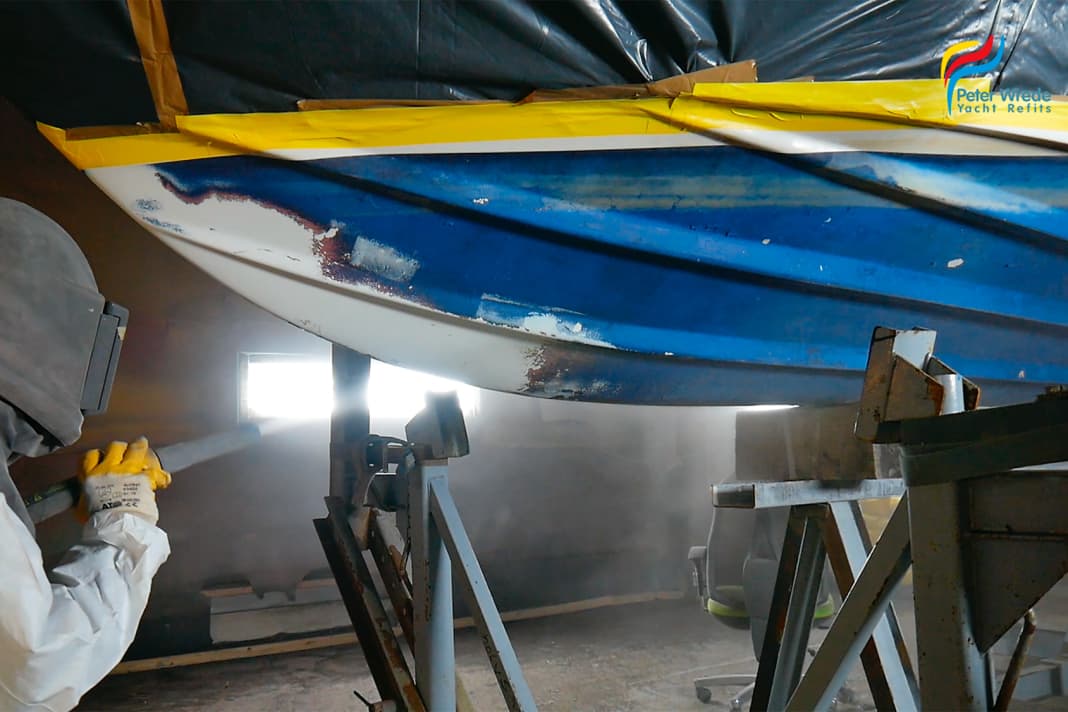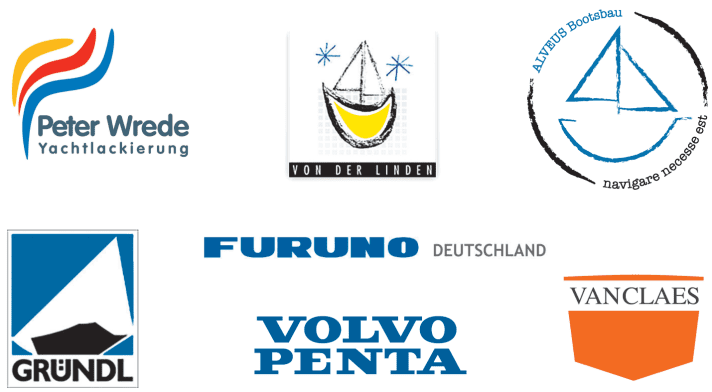





All episodes of the refit project:
- Part 1: Stocktaking
- Part 2: Replacing the rear view mirror
- Part 3: The underwater hull
- Part 4: GRP repairs
- Part 5: Antifouling coating
- Part 6: The motor foundation
- Part 7: The stringer system
- Part 8: The new engine
- Part 9: The new tank
- Part 10: The interior fittings
- Part 11: The interior work continues
- Part 12: The side panelling
- Part 13: Surface treatment and colour
Even if modern paints "survive" much longer, for the majority of boat owners one thing is certain: the underwater hull needs a new coat of antifouling paint every spring. That adds up to a lot of paint over more than 25 years. And it has to come off completely.
We and the refit professionals at Peter Wrede want to know what lies beneath the thick layer of paint. At best, harmless scuffs and scratches; at worst, the nightmare of all GRP boat owners: osmosis. It is important to know that the outer protective layer, the gelcoat, like any other material, is not impermeable to water vapour. This means that every hull laminate (the combination of glass fibres and laminating resin) absorbs moisture when the boat is in the water, but releases it again when it is on land. The danger is that inferior resin dissolves when exposed to moisture.
The decomposition product is an acid that collects in construction-related cavities between the gelcoat and laminate, write the refit professionals on their website ( www.yachtlackierung.de ). The decomposition process, it says, remains unnoticed until the osmosis process increases the pressure in the cavities to such an extent that the gelcoat forms bubbles.
Underwater hull is blasted and tested in UV light
A sanding test provides initial insights into the current condition of our Conquest. If there are osmosis bubbles, they are "decapitated" during sanding and are then clearly visible as white dots on the exposed gelcoat. The test result in our case: no findings. However, final certainty as to whether there is osmosis damage and what the substance of the underwater hull looks like as a whole can only be obtained after the blasting work. The gelcoat is gently exposed using the Rotoblast process, but is still "flawless".
The perfect workplace, Wrede's stanchion system, on which the underwater hull can be processed "from a single mould" without any imperfections, is located in an air-conditioned hall with a constant temperature of 20 degrees. Before the "blasting man" can get started, the expected floating position plus 6 cm of "flabby water edge" is cleanly cut out using a laser. The men, dressed in protective suits, have wrapped everything above this in blast-proof packaging.
After the blasting comes the bare facts. The underwater hull is thoroughly examined for osmosis from all sides, piece by piece, using a UV black light test lamp. Result: "Everything in the green zone." The measured moisture values are also harmless. Diagnosis: The "patient" has no osmosis.
The gelcoat must be completely removed
A reason to celebrate? Unfortunately not. Peter Wrede's team of professionals took a close look and discovered during a thorough visual inspection that the gelcoat in the underwater area was in very poor condition. Structural hairline cracks, gelcoat peeling, large pores, partially thinned gelcoat, deep scratches caused by slipping and trailering, and lots of "small stuff".
The specialists' conclusion: The list of defects is so long that it makes technical sense to remove the gelcoat completely down to the laminate using a much more intensive shotblasting process. This is the only way to be sure that no substrate risks remain in the processing area that could cause trouble in the years to come. So, there is a lot to do.
Video of the refit project
The BOOTE Refit project is supported by


